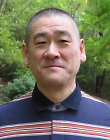Top>Research>The Background of Era Names in Japan
 Index
Index
The Background of Era Names in Japan
Masaharu Mizukami
Professor, Faculty of Letters, Chuo University
Area of Specialization: Chinese Philosophy
Era names and the significance of time
“In Showa 33, I joined the glorious baseball team...”—many people still remember the first phrase of the retirement speech by Shigeo Nagashima as if it were yesterday. Am I wrong in thinking that the speech would have been halting and uninspiring if it were to have begun with the phrase “In 1958, I joined the glorious baseball team...”? Although the years “Showa 33” and “1958” are the same in terms of the physical amount of time, a significantly different impression is created by each of the terms.
The Gregorian calendar has a specific beginning but lacks a definite ending at some point in the future. Conversely, the era names (called nengo in Japanese) used in Japan have both a beginning and an end. Since the Heian Period, a banner called a banzai-ban has been displayed in front of Shishinden Hall (Hall for State Ceremonies) at the time of the Emperor’s coronation. Translated literally, the banzai-ban expresses the wish for the Emperor’s rule to last for 10,000 years—however, this is clearly nothing more than wishful thinking. Era names have always been selected and used based on the understanding that they would eventually be changed. The average length of time covered by a single era name in Japan is about 5 years. To Japanese citizens living in a society which uses era names, each of these limited time frames creates recognition for a specific era in time. In doing so, era names have continued to imbue time in Japan with unique significance.
Preservation of traditional culture
Era names were first used from the time of Emperor Wu of the Former Han Dynasty in China. Gradually, the use of era names was adopted by surrounding regions and nations. Era names functioned as a device for explicitly and widely expressing the position of political sovereignty. Accordingly, it was not uncommon for a new era name to be set by each individual seeking to establish new political power. Era names which lack valid political backing are called unofficial era names, or shi-nengo in Japanese. In Japan, official era names have been used continuously without interruption from the Taiho Period (701-704) until the Heisei Period today.
Despite being the origin of era names, China stopped using era names long ago with the last era name used in China being the Xuantong Period (1909-1911) of the last Emperor of the Qing Dynasty. Therefore, it can be said that the custom of using era names in Japan continuing to this day provides a glimpse into the cultural conservatism of Japan. An enormous amount of time and effort is required to transform a cultural phenomenon into tradition, and era names are not exception. Although we Japanese people lack detailed knowledge of era names, we have continued to use era names despite feeling that great inconvenience has been caused to preserve them.
Procedures for selecting an era name and Chinese classics
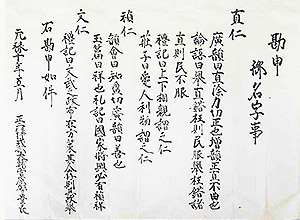
Figure 1: Writings on Names for Imperial Princes
Up until the Meiji Period, the process of changing an era name started with a series of procedures performed according to an Imperial order. Customarily, the new era name was officially enacted upon distribution of an Imperial edict regarding the name change. In later times, there was increasing interference from the samurai class. In particular, it appears that the name change at the beginning of the Edo Period was led by the feudal government of the Shogunate. However, Japan still retained a framework in which the Emperor issued a proposal, the candidate name was deliberated on by the Imperial Court, and a final decision was made by the Emperor. Until the end of the Edo Period, the procedures for changing an era name at the Imperial Court remain almost exactly the same.
As is widely known, the majority of era names in Japan are based on texts from Chinese classics. For example, the name “Heisei” was formed by combining a sentence from the Records of the Grand Historian that calls for domestic peace and cordial diplomatic relations and a sentence from the Book of Documents that calls for stable and tranquil conditions. It is difficult to accurately discern when the custom of using era names referencing Chinese classics first began. The Ninju Period (851-854) is obviously in reference to Chinese classics, but the origin of subsequent era names remains unclear. The use of Chinese classics when selecting era names seemed to be normalized from the Shoryaku Period (990-995).
The use of Chinese classics as a definite source in government business of the Imperial Court was not restricted only to era names. In fact, Chinese classics were also used when giving names to people. Figure 1 shows the Writings on Names for Imperial Princes from the collection of the National Museum of Japanese History (formerly in the collection of the Takamatsu-no-Miya). The Writings propose the three names of Naohito, Yoshihito and Fumihito as candidate names for Princes, and include quotes from Chinese classics in order to substantiate the appropriateness of the kanji used in the names.
Era names are not selected via top-down authority; instead, they are normally chosen by sifting through candidate names. Several candidate names and the Chinese classics serving as a basis for each name are listed in a document known as an Era Name Text. Every time that a new era name was to be selected, an Era Name Text was submitted by several different civil officials. Of course, Era Name Texts can only be submitted by selected individuals. In medieval Japan and earlier, only a limited number of people had knowledge of the Chinese classics. Therefore, personnel capable of selecting appropriate era names based on Chinese classics came almost exclusively from the Hakase Family, which had studied the Chinese classics for many generations.
Families involved in changing era names: trends and responses
The Hakase Family was divided into the Myogyo-Hakase Family, which specialized in the Confucian scriptures, and the Monjo-Hakase Family, which specialized in Chinese classics on literature and history. Era Name Texts were submitted by members of the Monjo-Hakase Family. Specifically, the Monjo-Hakase Family consisted of five family branches headed by the Sugawara clan, the Oe clan, and the Southern Branch, the Shiki Branch, and the Hino Line of the Northern Branch of Fujiwara clan. The changing of era names was a matter of great national importance and it was a high professional honor to be involved. Therefore, numerous records related to the changing of era names were kept. In particular, the classical books and documents formerly in the collection of the Hirohashi Family contain a large amount of documentation related to changing era names.
The Hirohashi Family belonged to the Hino Line of the Northern Branch under the guidance of Fujiwara. The aforementioned collection is under the supervision of the National Museum of Japanese History and contains the Writings on Era Names of the Hino Family by Generation, which is a list of Era Name Texts submitted by civil officials from the Hino Family. According to this document, from among the meetings of the Kaigen-no-Sadame (Era Name Advisory Council) called from the Oho Period (1161-1162) to the Oan Period (1368-1375), civil officials from one ruling clan submitted Era Name Texts to 34 meetings, of which 13 were ultimately selected as the era name.
The five family branches in the Monjo-Hakase Family were constantly competing with each other for the honor of having their submission selected as the era name. As with any competition, careful preparation was essential for victory. Since the Imperial Court prioritized ancient customs and traditions, there was no choice but to use mainly records of precedent as the texts for era names. For example, during screening of candidate names, the relationship between the Chinese characters forming era names that had already been used and the fate of events which actually took place during those eras was always an issue of great importance. There is meticulous etiquette in even the smallest details, including the format of the Era Name Texts submitted to the Kaigen-no-Sadame (Era Name Advisory Council), rules for using the Han reading or Wu reading of Chinese characters when reading the era names aloud, and the method for tying the twisted paper string used to bind the Era Name Text when rolled after reading. For families involved in the changing of era names, creation of records regarding trends and responses was an extremely important occupation for maintaining the family.
Hirohashi Family and changing era names
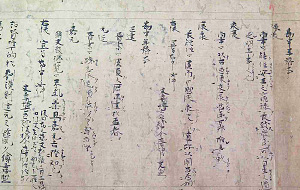
Figure 2: Record of Kaigen-no-Sadame by Lord Tsunemitsu
As part of my current research activities, I had the opportunity to hold a special exhibition entitled “Era Names and the Imperial Court” at the National Museum of Japanese History from September 12 to October 22 of 2017. Partly due to the heightened interest in era names that coincided with the holding of the exhibition, it was extremely popular despite the relatively mundane theme, and the exhibition was even featured by several media outlets. The exhibition was divided into four areas named “Giving a Name to Time,” “The People Who Decided on Era Names,” “Methods of Selecting Era Names,” and “Era Names and Chinese Classics.” The exhibition placed a spotlight on the process of deciding on an era name and displayed actual documentation or similar materials.
The highlight of the exhibition was the Record of Kaigen-no-Sadame by Lord Tsunemitsu. This record was handwritten by Tsunemitsu Hirohashi (1212-1274), who was involved in numerous changes of era names during the Kamakura Period. The record is a scroll that stretches for more than 10 meters and lists detailed reports on the three era name changes for the Kangen Period (1243-1247), the Hoji Period (1247-1249), and the Kencho Period (1249-1256). Figure 2 shows a record for a portion of the Era Name Text that was submitted to the Kaigen-no-Sadame for Kangen Period. The record references the compilation of Hsiu-wen-tien yu-lan (encyclopedia) that had been scattered and lost in China, thus demonstrating a portion of the philological value held by the record.
Passion towards recordkeeping
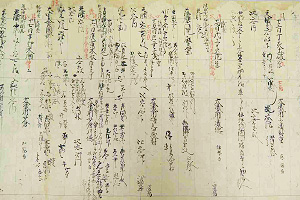
Figure 3: History of Lord Tsunemitsu
The Record of Kaigen-no-Sadame by Lord Tsunemitsu was edited for sharing within the family. A record created by Tsunemitsu at the previous stages of the editing process also remains. Figure 3 shows a portion of the “History of Lord Tsunemitsu.” One portion of this record consists of a guchureki, which is equivalent to the desktop journals used today. In a section of the guchureki dated April 15, Joei 2 (1233), a brief note regarding the Kaigen-no-Sadame for “Tenpuku” (1233-1234) can be seen, starting with the phrase “Kaigen-no-Sadame-no-Koto." Figure 4 shows the introduction to an article on era name changes written in the Journal of Lord Tsunemitsu (also called Minkeiki). The article is also dated April 15, Joei 2 (1233) and begins with the phrase “Kaigen-no-Sadame-no-Gi” For the roughly two-week period from April 1 to April 15, Tsunemitsu wrote a journal which included articles on era name changes and completely filled a scroll stretching 20 meters long. The thickness of the rolled scroll clearly expresses Tsunemitsu’s passion towards recordkeeping.
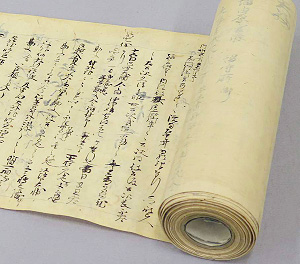
Figure 4: Journal of Lord Tsunemitsu (Minkeiki)
These documents show how the Record of Kaigen-no-Sadame by Lord Tsunemitsu was created based on an accumulation of daily records including the History of Lord Tsunemitsu and the Journal of Lord Tsunemitsu (Minkeiki). Furthermore, the records written by Tsunemitsu vividly express the passion with which he engaged in recordkeeping. It can be said that the accumulated efforts of civil servants like Tsunemitsu were one of the major elements in forming the significance of era names. At any rate, although ancient records have been transcribed into typeset, preparing for the exhibition taught me that it is sometimes necessary to view the original materials in order to understand the actions and feelings of historical figures.
The French historian Jacques Le Goff explained the significance of historical periods as follows: “The act of dividing history into periods is complex. Although this act must be subjective, at the same time, an effort must be made to produce results which will be accepted by as many people as possible” (from a translation of “Must We Divide History Into Periods?” by Jun Suganuma.) Le Goff’s observation can also be applied to era names, which are a type of historical division. Furthermore, I entirely agree with Le Goff’s opinion that “this is an extremely fascinating historical research theme.” For example, the deliberation which occurred at the Kaigen-no-Sadame (this deliberation is called nanchin in Japanese) provides a glimpse of human drama that includes cooperation and interference among court nobles. Tracing the deliberation back to its source makes it possible to inquire into changes in how Chinese classics are accepted in Japan, which is a subject of endless interest. Although some aspects of era names are not directly related to my area of expertise, I will continue to enjoy this theme until Japan changes into its next era name.
Notes
This article was written based on the contents of the special exhibition entitled “Era Names and the Imperial Court” at the National Museum of Japanese History, as mentioned in the main text above. This exhibition was created by researchers involved in the “Project for Organizing and Researching Era Name Texts: Focusing on Texts Formerly in the Collection of the Hirohashi Family,” a joint research project held with the National Museum of Japanese History (Professor Michihiro Kojima was in charge of coordination with the Museum), and in the “Project for Constructing a Research Foundation for Era Name Texts,” Grants-in-Aid for Scientific Research on Fundamental Research (B) held by the Japan Society for the Promotion of Science. All images of literature used in this article are from the collection of the National Museum of Japanese History (photographs were taken by the author). I would especially like to thank Fumiko Moriya, a specialist in charge of materials at the Museum, for her great cooperation in the use of materials.
- Masaharu Mizukami
Professor, Faculty of Letters, Chuo University
Area of Specialization: Chinese Philosophy
- Masaharu Mizukami was born in Hokkaido in 1963.
He graduated from the Faculty of Letters, Hokkaido University in 1988.
He completed the Master’s Program in the Graduate School of Letters, Hokkaido University in 1990.
He finished the Doctoral Program in the Graduate School of Letters, Hokkaido University in 1994.
He served as Research Assistant and then as Assistant Professor in the Faculty of Letters, Hokkaido University; and as Associate Professor and then as Professor in the Faculty of Education, University of the Ryukyus before assuming his current position in 2015.
His research themes include academic history of the Qing Dynasty in China, interpretation of the Confucian classics, study of the Civil Examination System, and study of Chinese classics in Japan (including Ryukyu kangaku). One of his works pertaining to this article is “Philological Value of the Materials Concerning the Names of Eras of Japan” (Journal of the Faculty of Letters, Chuo University (Philosophy) #59). He is in charge of editing for the “Compilation of Japanese Kanji in Rare Writings: Era Name Edition,” a 5,000-page volume that is scheduled to be published by the Shanghai Academy of Social Sciences by the end of this year.
- Research Activities as a Member of Research Fellowship for Young Scientists (DC1), Japan Society for the Promotion of Science (JSPS) Shuma Tsurumi
- Important Factors for Innovation in Payment Services Nobuhiko Sugiura
- Beyond the Concepts of Fellow Citizens and Foreigners— To Achieve SDGs Goal 10 “Reduce Inequality Within and Among Countries” Rika Lee
- Diary of Struggles in Cambodia Fumie Fukuoka
- How Can We Measure Learning Ability?
—Analysis of a Competency Self-Assessment Questionnaire— Yu Saito / Yoko Neha - The Making of the Movie Kirakira Megane








